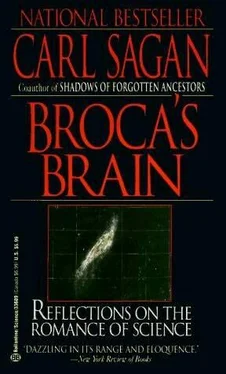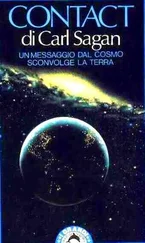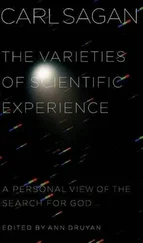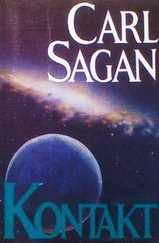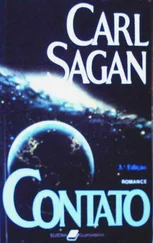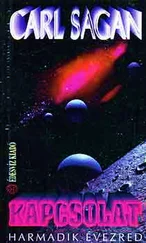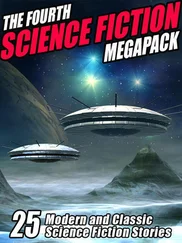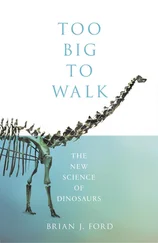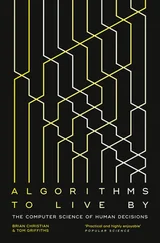Carl Sagan - Broca's Brain - The Romance of Science
Здесь есть возможность читать онлайн «Carl Sagan - Broca's Brain - The Romance of Science» весь текст электронной книги совершенно бесплатно (целиком полную версию без сокращений). В некоторых случаях можно слушать аудио, скачать через торрент в формате fb2 и присутствует краткое содержание. Жанр: Физика, на английском языке. Описание произведения, (предисловие) а так же отзывы посетителей доступны на портале библиотеки ЛибКат.
- Название:Broca's Brain: The Romance of Science
- Автор:
- Жанр:
- Год:неизвестен
- ISBN:нет данных
- Рейтинг книги:3 / 5. Голосов: 1
-
Избранное:Добавить в избранное
- Отзывы:
-
Ваша оценка:
- 60
- 1
- 2
- 3
- 4
- 5
Broca's Brain: The Romance of Science: краткое содержание, описание и аннотация
Предлагаем к чтению аннотацию, описание, краткое содержание или предисловие (зависит от того, что написал сам автор книги «Broca's Brain: The Romance of Science»). Если вы не нашли необходимую информацию о книге — напишите в комментариях, мы постараемся отыскать её.
Broca's Brain: The Romance of Science — читать онлайн бесплатно полную книгу (весь текст) целиком
Ниже представлен текст книги, разбитый по страницам. Система сохранения места последней прочитанной страницы, позволяет с удобством читать онлайн бесплатно книгу «Broca's Brain: The Romance of Science», без необходимости каждый раз заново искать на чём Вы остановились. Поставьте закладку, и сможете в любой момент перейти на страницу, на которой закончили чтение.
Интервал:
Закладка:
There was once a subtle science-fiction story by the astronomer Robert S. Richardson on the continuous-creation origin of cosmic rays. Isaac Asimov’s story Breathes There a Man provided a poignant insight into the emotional stress and sense of isolation of some of the best theoretical scientists. Arthur C. Clarke’s The Nine Billion Names of God introduced many Western readers to an intriguing speculation in Oriental religions.
One of the great benefits of science fiction is that it can convey bits and pieces, hints and phrases, of knowledge unknown or inaccessible to the reader. Heinlein’s And He Built a Crooked House was for many readers probably the first introduction they had ever encountered to four-dimensional geometry that held any promise of being comprehensible. One science-fiction work actually presents the mathematics of Einstein’s last attempt at a unified field theory; another presents an important equation in population genetics. Asimov’s robots were “positronic,” because the positron had recently been discovered. Asimov never provided any explanation of how positrons run robots, but his readers had now heard of positrons. Jack Williamson’s rhodomagnetic robots were run off ruthenium, rhodium and palladium, the next Group VIII metals after iron, nickel and cobalt in the periodic table. An analogue with ferromagnetism was suggested. I suppose that there are science-fiction robots today that are quark-ish or charming and will provide some brief verbal entrée into the excitement of contemporary elementary particle physics. L. Sprague de Camp’s Lest Darkness Fall is an excellent introduction to Rome at the time of the Gothic invasion, and Asimov’s Foundation series, although this is not explained in the books, offers a very useful summary of some of the dynamics of the far-flung imperial Roman Empire. Time-travel stories-for example, the three remarkable efforts by Heinlein, All You Zombies, By His Bootstraps and The Door into Summer -force the reader into contemplations of the nature of causality and the arrow of time. They are books you ponder over as the water is running out of the bathtub or as you walk through the woods in an early winter snowfall.
Another great value of modern science fiction is some of the art forms it elicits. A fuzzy imagining in the mind’s eye of what the surface of another planet might look like is one thing, but examining a meticulous painting of the same scene by Chesley Bonestell in his prime is quite another. The sense of astronomical wonder is splendidly conveyed by the best of such contemporary artists-Don Davis, Jon Lomberg, Rick Sternbach, Robert McCall. And in the verse of Diane Ackerman can be glimpsed the prospect of a mature astronomical poetry, fully conversant with standard science-fiction themes.
Science-fiction ideas are widespread today in somewhat different guises. We have science-fiction writers such as Isaac Asimov and Arthur C. Clarke providing cogent and brilliant summaries in nonfictional form of many aspects of science and society. Some contemporary scientists are introduced to a vaster public by science fiction. For example, in the thoughtful novel The Listeners , by James Gunn, we find the following comment made fifty years from now about my colleague, the astronomer Frank Drake: “Drake! What did he know?” A great deal, it turns out. We also find straight science fiction disguised as fact in a vast proliferation of pseudoscientific writings, belief systems and organizations.
One science-fiction writer, L. Ron Hubbard, has founded a successful cult called Scientology-invented, according to one account, overnight on a bet that he could do as well as Freud, invent a religion and make money from it. Classic science-fiction ideas are now institutionalized in unidentified flying objects and ancient-astronaut belief systems-although I have difficulty not concluding that Stanley Weinbaum (in The Valley of Dreams ) did it better, as well as earlier, than Erich von Däniken. R. De Witt Miller in Within the Pyramid manages to anticipate both von Däniken and Velikovsky, and to provide a more coherent hypothesis on the supposed extraterrestrial origin of pyramids than can be found in all the writings on ancient astronauts and pyramidology. In Wine of the Dreamers , by John D. MacDonald (a science-fiction author now transmogrified into one of the most interesting contemporary writers of detective fiction), we find the sentence “and there are traces, in Earth mythology… of great ships and chariots that crossed the sky.” The story Farewell to the Master , by Harry Bates, was converted into a motion picture, The Day the Earth Stood Still (which abandoned the essential plot element, that on the extraterrestrial spacecraft it was the robot and not the human who was in command). The movie, with its depiction of a flying saucer buzzing Washington, is thought by some sober investigators to have played a role in the 1952 Washington, D.C., UFO “flap” which followed closely the release of the motion picture. Many popular novels today of the espionage variety, in the shallowness of their characterizations and the gimmickry of their plots, are virtually indistinguishable from pulp science fiction of the ’30s and ’40s.
THE INTERWEAVING of science and science fiction sometimes produces curious results. It is not always clear whether life imitates art or vice versa. For example, Kurt Vonnegut, Jr., has written a superb epistemological novel, The Sirens of Titan , in which a not altogether inclement environment is postulated on Saturn’s largest moon. When in the last few years some planetary scientists, myself among them, presented evidence that Titan has a dense atmosphere and perhaps higher temperatures than expected, many people commented to me on the prescience of Kurt Vonnegut. But Vonnegut was a physics major at Cornell University and naturally knowledgeable about the latest findings in astronomy. (Many of the best science-fiction writers have science or engineering backgrounds; for example, Poul Anderson, Isaac Asimov, Arthur C. Clarke, Hal Clement and Robert Heinlein.) In 1944, an atmosphere of methane was discovered on Titan, the first satellite in the solar system known to have an atmosphere. In this, as in many similar cases, art imitates life.
The trouble has been that our understanding of the other planets has been changing faster than the science-fiction representations of them. A clement twilight zone on a synchronously rotating Mercury, a swamp-and-jungle Venus and a canal-infested Mars, while all classic science-fiction devices, are all based upon earlier misapprehensions by planetary astronomers. The erroneous ideas were faithfully transcribed into science-fiction stories, which were then read by many of the youngsters who were to become the next generation of planetary astronomers-thereby simultaneously capturing the interest of the youngsters and making it more difficult to correct the misapprehensions of the oldsters. But as our knowledge of the planets has changed, the environments in the corresponding science-fiction stories have also changed. It is quite rare to find a science-fiction story written today that involves algae farms on the surface of Venus. (Incidentally, the UFO-contact mythologizers are slower to change, and we can still find accounts of flying saucers from a Venus populated by beautiful human beings in long white robes inhabiting a kind of Cytherean Garden of Eden. The 900° Fahrenheit temperatures of Venus give us one way of checking such stories.) Likewise, the idea of a “space warp” is a hoary science-fiction standby but it did not arise in science fiction. It arose from Einstein’s General Theory of Relativity.
The connection between science-fiction depictions of Mars and the actual exploration of Mars is so close that, subsequent to the Mariner 9 mission to Mars, we were able to name a few Martian craters after deceased science-fiction personalities. (See Chapter 11.) Thus there are on Mars craters named after H. G. Wells, Edgar Rice Burroughs, Stanley Weinbaum and John W. Campbell, Jr. These names have been officially approved by the International Astronomical Union. No doubt other science-fiction personalities will be added soon after they die.
Читать дальшеИнтервал:
Закладка:
Похожие книги на «Broca's Brain: The Romance of Science»
Представляем Вашему вниманию похожие книги на «Broca's Brain: The Romance of Science» списком для выбора. Мы отобрали схожую по названию и смыслу литературу в надежде предоставить читателям больше вариантов отыскать новые, интересные, ещё непрочитанные произведения.
Обсуждение, отзывы о книге «Broca's Brain: The Romance of Science» и просто собственные мнения читателей. Оставьте ваши комментарии, напишите, что Вы думаете о произведении, его смысле или главных героях. Укажите что конкретно понравилось, а что нет, и почему Вы так считаете.
